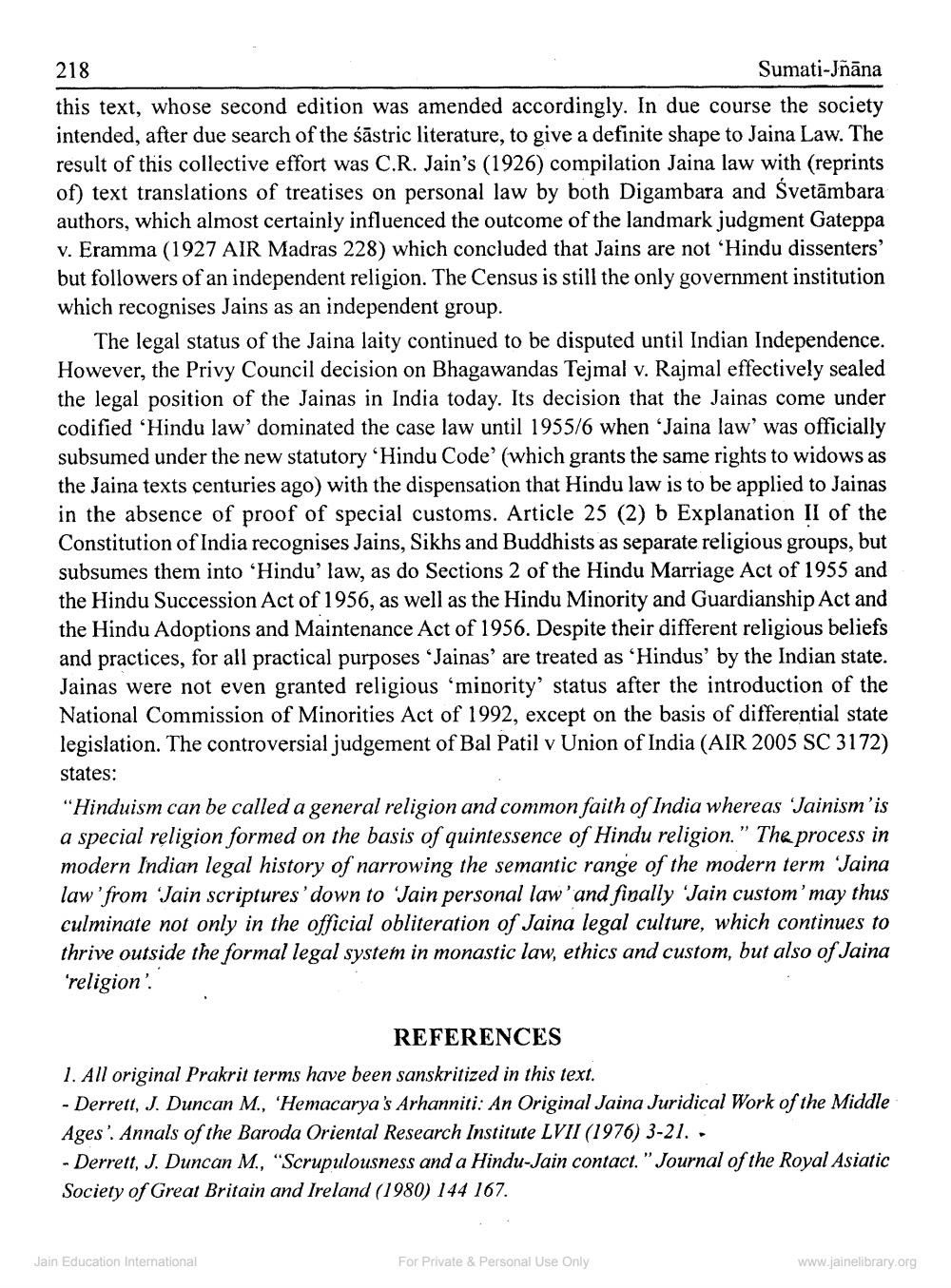________________
218
Sumati-Jñāna this text, whose second edition was amended accordingly. In due course the society intended, after due search of the sastric literature, to give a definite shape to Jaina Law. The result of this collective effort was C.R. Jain's (1926) compilation Jaina law with (reprints of) text translations of treatises on personal law by both Digambara and Śvetāmbara authors, which almost certainly influenced the outcome of the landmark judgment Gateppa v. Eramma (1927 AIR Madras 228) which concluded that Jains are not 'Hindu dissenters' but followers of an independent religion. The Census is still the only government institution which recognises Jains as an independent group.
The legal status of the Jaina laity continued to be disputed until Indian Independence. However, the Privy Council decision on Bhagawandas Tejmal v. Rajmal effectively sealed the legal position of the Jainas in India today. Its decision that the Jainas come under codified 'Hindu law' dominated the case law until 1955/6 when 'Jaina law' was officially subsumed under the new statutory 'Hindu Code' (which grants the same rights to widows as the Jaina texts centuries ago) with the dispensation that Hindu law is to be applied to Jainas in the absence of proof of special customs. Article 25 (2) b Explanation II of the Constitution of India recognises Jains, Sikhs and Buddhists as separate religious groups, but subsumes them into 'Hindu' law, as do Sections 2 of the Hindu Marriage Act of 1955 and the Hindu Succession Act of 1956, as well as the Hindu Minority and Guardianship Act and the Hindu Adoptions and Maintenance Act of 1956. Despite their different religious beliefs and practices, for all practical purposes 'Jainas' are treated as 'Hindus' by the Indian state. Jainas were not even granted religious 'minority' status after the introduction of the National Commission of Minorities Act of 1992, except on the basis of differential state legislation. The controversial judgement of Bal Patil v Union of India (AIR 2005 SC 3172)
states:
"Hinduism can be called a general religion and common faith of India whereas Jainism'is a special religion formed on the basis of quintessence of Hindu religion." The process in modern Indian legal history of narrowing the semantic range of the modern term 'Jaina law' from Jain scriptures' down to Jain personal law' and finally Jain custom' may thus culminate not only in the official obliteration of Jaina legal culture, which continues to thrive outside the formal legal system in monastic law, ethics and custom, but also of Jaina 'religion'.
REFERENCES
1. All original Prakrit terms have been sanskritized in this text.
- Derrett, J. Duncan M., 'Hemacarya's Arhanniti: An Original Jaina Juridical Work of the Middle Ages'. Annals of the Baroda Oriental Research Institute LVII (1976) 3-21. -
- Derrett, J. Duncan M., “Scrupulousness and a Hindu-Jain contact. " Journal of the Royal Asiatic Society of Great Britain and Ireland (1980) 144 167.
Jain Education International
For Private & Personal Use Only
www.jainelibrary.org




